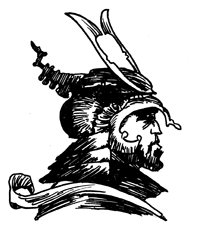Robert Jordan, born James Oliver Rigney Jr. in 1948, sold more than 40 million books in his lifetime. His Wheel of Time series, a still-unfinished multivolume epic spanning, at last count, thirteen books, more than 10,500 pages, and approximately 3,734,312 words, is among the world’s most popular fantasy series since J. R. R. Tolkien’s Lord of the Rings. You would have every reason to expect this level of authorial accomplishment to be accompanied by an onset of false modesty—the one-sentence life story, say, graven casually on the back flap of a dust jacket. Yet in nine of the eleven Wheel of Time novels Jordan wrote before his death, in 2007, we’re presented with the portrait of a man looking to get lucky at a Renaissance Faire:
Robert Jordan was born in 1948 in Charleston, South Carolina, where he now lives with his wife, Harriet, in a house built in 1797. He taught himself to read when he was four with the incidental aid of a twelve-year-older brother, and was tackling Mark Twain and Jules Verne by five. He is a graduate of The Citadel, the Military College of South Carolina, with a degree in physics. He served two tours in Vietnam with the U.S. Army; among his decorations are the Distinguished Flying Cross, the Bronze Star with ‘V,’ and two Vietnamese Crosses of Gallantry. A history buff, he has also written dance and theater criticism. He enjoys the outdoor sports of hunting, fishing and sailing, and the indoor sports of poker, chess, pool and pipe collecting. He has been writing since 1977 and intends to continue until they nail shut his coffin.
Jordan’s biography is typical of his work: verbose but vivid, tendentious but still somehow charming, and threaded throughout with equal parts valor and invention. (Pipe collecting, after all, was not a sport until Jordan made it one; nor, for that matter, was Robert Jordan a fantasy author before Rigney rescued him from a prior career as an explosives expert in Hemingway’s For Whom the Bell Tolls.)
Real-life combat experience is something that Jordan, a former helicopter gunner (he claimed to have once shot a rocket-propelled grenade out of midair), shared with Tolkien, who witnessed all but one of his closest friends die in World War I. But where the don of modern fantasy boasted a dusty, Oxford-certified facility with language, philology, and the Middle Ages, Jordan made himself over after Vietnam in the classic mode of the American genre-fiction author. A bearded man with a penchant for elaborate canes, chunky rings, and comical hats, he favored the look of a Southern general. He admitted to being a Freemason. At Q&A sessions, he would not...
You have reached your article limit
Sign up for a digital subscription and continue reading all new issues, plus our entire archives, for just $1.50/month.
Already a subscriber? Sign in





